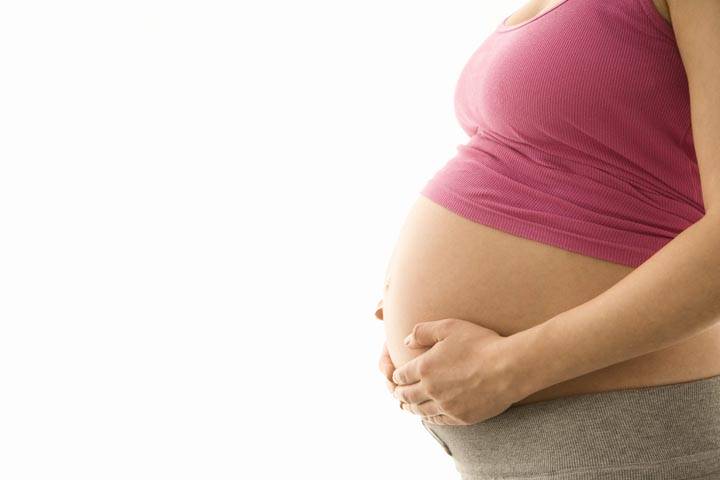Ontario midwives argue they’re paid about half of what they’re owed because of a gender-based pay gap that has widened dramatically in the years since the profession became regulated in the province.

The Ontario health ministry, which sets midwife pay, denies that gender has played any part in how midwives are compensated, countering that the remuneration reflects a number of factors, including significant differences in education and expertise between doctors and midwives.
Now, nearly five years after a complaint was brought to the Human Rights Tribunal of Ontario, midwives are awaiting a decision.
Elizabeth Brandeis, president of the Association of Ontario Midwives (AOM), said in an interview in early August that the organization is “quite optimistic” about the ruling.
She said the significance of the case — which has nearly 800 complainants — goes far beyond one profession.
“I think we’re having a more robust public conversation now about equal pay for equal work, and a real recognition that women are undervalued in terms of the structure of their pay,” she said.
In the midwifery case, she said, it’s “so obvious that we are a female-dominated profession providing care to almost exclusively women, and trans people having babies, and that you know pregnancy and birth are considered a female sphere.”
A spokesperson for the Ontario Ministry of Health and Long-Term Care (MOHLTC) declined to comment on the case ahead of the decision, but said that the government “values the contribution of Ontario’s midwives because the care they provide benefits mothers, babies, and families as well as the health-care system.”
Represented by veteran pay equity lawyer Mary Cornish, the AOM filed the complaint on behalf of its members in November of 2013. Closing arguments wrapped up in June of last year.
Among other claims, the group alleged that the government allowed a gender-based pay gap to form by not taking steps to ensure the compensation-setting process for midwifery was free of discrimination, and not monitoring changes in the work of midwives.
READ MORE: 14 factors lead to workplace gender equality — here’s how Canada measures
Midwives are seeking an immediate compensation adjustment plus damages for “injury to dignity and self-respect,” changes to how they negotiate with the government, orders to ensure pay equity issues don’t arise in the future, along with an acknowledgement that a violation occurred under the human rights code.
In response to the midwives’ complaint, the provincial government has denied that “any aspect of the remuneration of midwives is discriminatory on the basis of sex.”
Reached Monday morning, a tribunal official could not immediately say when the adjudicator’s decision is expected, but said late last month a decision was anticipated within weeks.
The decision is binding, though the complainants and the respondent have the opportunity to appeal through seeking a judicial review.
Brandeis said that taking the issue to the tribunal was not a decision midwives took lightly.
“It did feel like our only option and a very long and frustrating history of inconsistent negotiations with government, a real unwillingness for government to see our case through a pay-equity, gendered lens,” she said.
Midwives attend 16 per cent of births in Ontario, the second-highest rate among all provinces. Almost all midwives in the province identify as women.
They provide primary health care during normal pregnancies — including labour, birth and postpartum — both for mom and baby, and are on call 24 hours a day.
The process involves building a relationship between the midwife and client, which proponents say leads to safe care and healthy outcomes.
The undervaluing of these kinds of skills is a component of gender-based pay inequity, midwives argue.
“Time spent and relationship building are not values that are prized in terms of the work that we think of as valuable in society and that’s a very gendered perspective,” Brandeis said.
Breaking down the pay equity claim
The midwives’ claim that they are underpaid stems from a robust pay equity analysis from expert consultant Paul Durber that was published in 2013.
In the report, commissioned by the AOM, he found that based on skill, effort, responsibilities and working conditions of midwives, top compensation should be set at 91 per cent of what a community health centre or family physician earns.
That would mean they would make just over $197,300 — an increase of $94,800 or 48 per cent more than the highest midwife salary, about $102,600 as of 2013.
Durber concluded that “given the extent of the pay equity gap, and the results of value comparisons, there exists significant wage discrimination adversely affecting midwives in their compensation, that is, it is not free from sex bias.”
WATCH: Here are 3 risks a woman over 35 may expect if she wants to become pregnant

The link between midwifery and doctor compensation goes back to when the practice became regulated and publicly funded in Ontario in the early 1990s.
In establishing the pay structure, the government of the day relied on an equity analysis and set top compensation at 65 per cent of that of family doctors, a historically male-dominated group.
“There was a recognition at that time there were many vulnerabilities in that profession, setting up the profession of midwifery as a female-dominated profession providing care in a women’s health realm,” Brandeis said.
Then, over the next two decades, pay grew by 76 per cent for comparison group, but midwives base salaries increased by 33 per cent, and were frozen for many of those years.
In its response to the complaint, the government said it rejected the validity and assumptions of the report and pointed out that, contrary to the assertion by midwives, the comparison group of doctors are not a male-dominated job class — just over half (53.2 per cent) were women as of 2012.
In addition, the ministry stated in its response, midwives receive additional compensation through benefits, operating grants and having their liability insurance paid for by the province, at $33,100 per year.
At the highest experience level, total midwife compensation can reach $192,300 per year.
WATCH: Study suggests stress experienced while pregnant has lasting health impacts for children

The government said that midwifery funding has grown by 428 per cent since the Liberals took office in 2003-2004, from $23.8 million to $125.5 million at the time the complaint was filed.
“This substantial level of public expenditure reflects the high value that MOHLTC attributes to the work performed by midwives in contributing to the well-being of women and newborns,” the ministry stated in its response.
Nonetheless, in 2010, the Courtyard report, an analysis jointly commissioned by AOM and the Liberal government itself, called for a 20 per cent boost in midwife pay. Those conclusions were not followed, however.
“It felt like a real betrayal of goodwill from government at that time, that this energy, funding, effort was put into examining our pay and then that was just ignored,” Brandeis said.
The government’s argument
In addition to denying that compensation for midwives has anything to do with gender, the government claimed that the differences in pay between midwives and doctors are due to over a dozen different factors.
Doctors have a broader scope of practice and treat more patients, including complex and risky cases, the ministry argued, and the job requires a higher level of judgment and deeper knowledge. The pay also reflects the province’s need to attract and retain medical talent, the ministry said in its response.
The ministry argued that medical school is more competitive, difficult and costly, and being a doctor requires a two-year residency requirement.
Midwifery, on the other hand, requires the completion of a four-year university degree program, which has limited enrollment each year, along with a year of post-graduate mentorship.
Brandeis said it’s a misconception that midwives are asking to be paid the same as family physicians or obstetricians.
“We recognize that physicians’ scope of practice and education is different from midwifery,” she said. “What we’re were asking for is a robust process that really does evaluate our skills, effort, responsibility and working conditions in comparison to other professionals who do similar work,” she said.








Comments